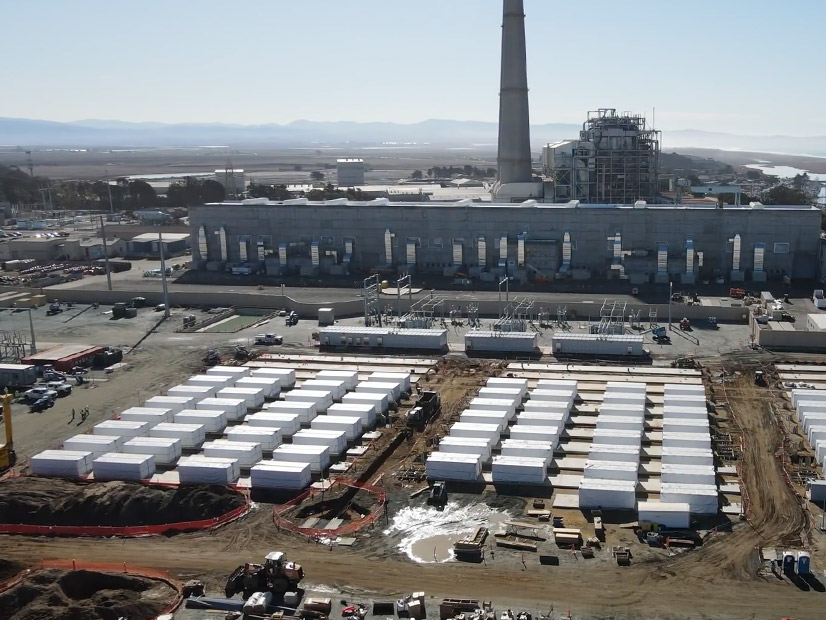CAISO has launched a new stakeholder initiative to foster connection of large amounts of storage in the coming years, releasing an issue paper last week and holding the first stakeholder call Wednesday.
The initiative focuses on market reforms to bring massive amounts of utility-scale storage into CAISO’s system to back up the solar and wind power needed for California’s transition to 100% clean energy by 2045, as well as to meet local capacity requirements.
“We have the ability to think broadly, at this point, about what kinds of concerns are out there surrounding storage resources,” Gabriel Murtaugh, the ISO’s lead policy developer for infrastructure and regulatory policy, said at the start of Wednesday’s meeting. “We know what sort of framework we have with our current market construct, but we do have the ability to potentially alter and update that market construct to better accommodate storage resources.”
The issue paper co-authored by Murtaugh and Bridget Sparks, infrastructure and regulatory policy specialist, said that “given the unique characteristics of energy storage resources compared to traditional energy generation or load resources, new market rules and changes to the ISO’s existing energy storage optimization models may be needed to fully integrate these resources into the market, to leverage the flexibility of these resources to maintain grid reliability, and to maximize their use and effectiveness to achieve clean energy goals.”
The paper addresses issues including state of charge, marginal costs, exceptional dispatch and variable charging rates.
Storage providers expressed concerns about “existing market rules, optimization algorithms and settlement processes as applied to the energy storage resources,” it said. “A principal concern raised by the storage community is a lack of compensation during critical periods when the ISO must retain state of charge on limited energy storage devices, which may preclude their active participation in the real-time markets.
“The consideration of the charging and discharging cycle of the energy storage is lacking from existing bid-cost-recovery rules, which is designed based on traditional energy generation resources. Another raised concern is related to the multi-interval market optimization as it applies to energy storage resources.”
CAISO COO Mark Rothleder told RTO Insider in an interview Friday that the initiative does not address the 1,500 MW of storage expected to come online by this summer to help head off shortfalls like those that caused last summer’s rolling blackouts. The Aug. 14-15 blackouts and near misses a few weeks later occurred as solar ramped down steeply in the evenings and there was insufficient storage to meet the high demand from summer heat waves.
The ISO expects to add at least another 1,000 to 2,000 MW of storage in 2022-2024, most of it in lithium-ion batteries with four-hour discharging capacity, he said. CAISO expects summer reliability issues to continue through 2024, when the state’s last nuclear plant, Diablo Canyon, begins shutting down. A buildout of solar, wind and batteries will eventually compensate.
“I don’t think there’s anywhere else in the world where you’ve got this amount of battery resources being utilized, and so we’re excited about demonstrating how you can use these resources effectively for reliability purposes,” Rothleder said.
However, “there are some things that we feel we need to address in the longer term in how we manage [storage resources] in real time … and ensure that they’re properly compensated for the services they are providing,” he said. Requiring operators of storage units to maintain a state of charge for evening readiness means they cannot take advantage of other financial opportunities, he said.
“As prices vary during the day, they may want to go after some of those prices … and that may be in conflict with us managing the charge,” Rothleder said. “Fully charged batteries are needed for that 4 p.m. to 5 p.m. hour, so what we’re trying to do here is better manage and better optimize storage, recognizing we need it for that evening hour.
“I think the batteries want flexibility to be able to act on middle-day opportunities or mid-hour opportunities, where the prices may go up for short periods,” he said. “They’d like to be able to respond to those, and we’re trying to balance those opportunities.”




